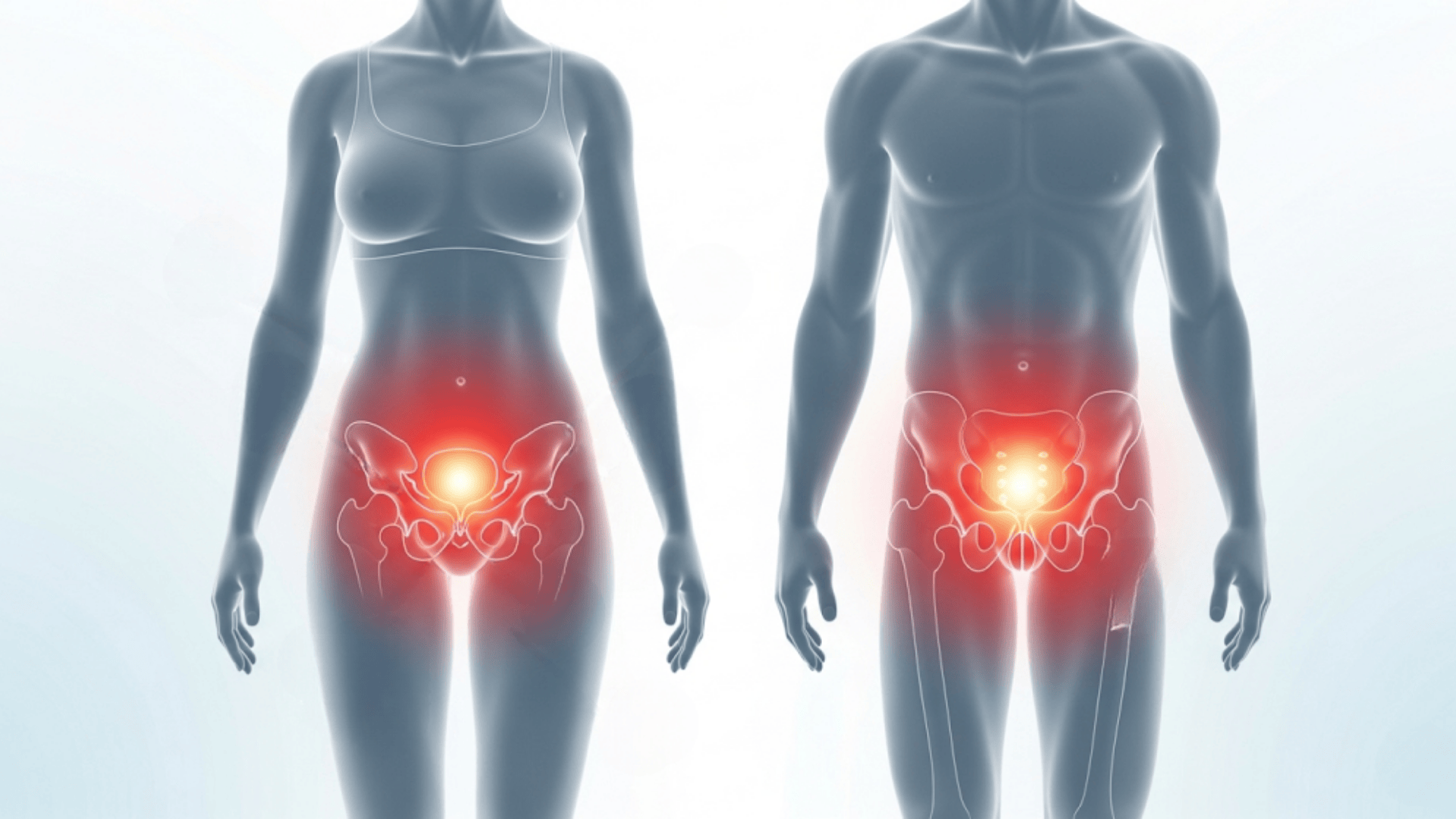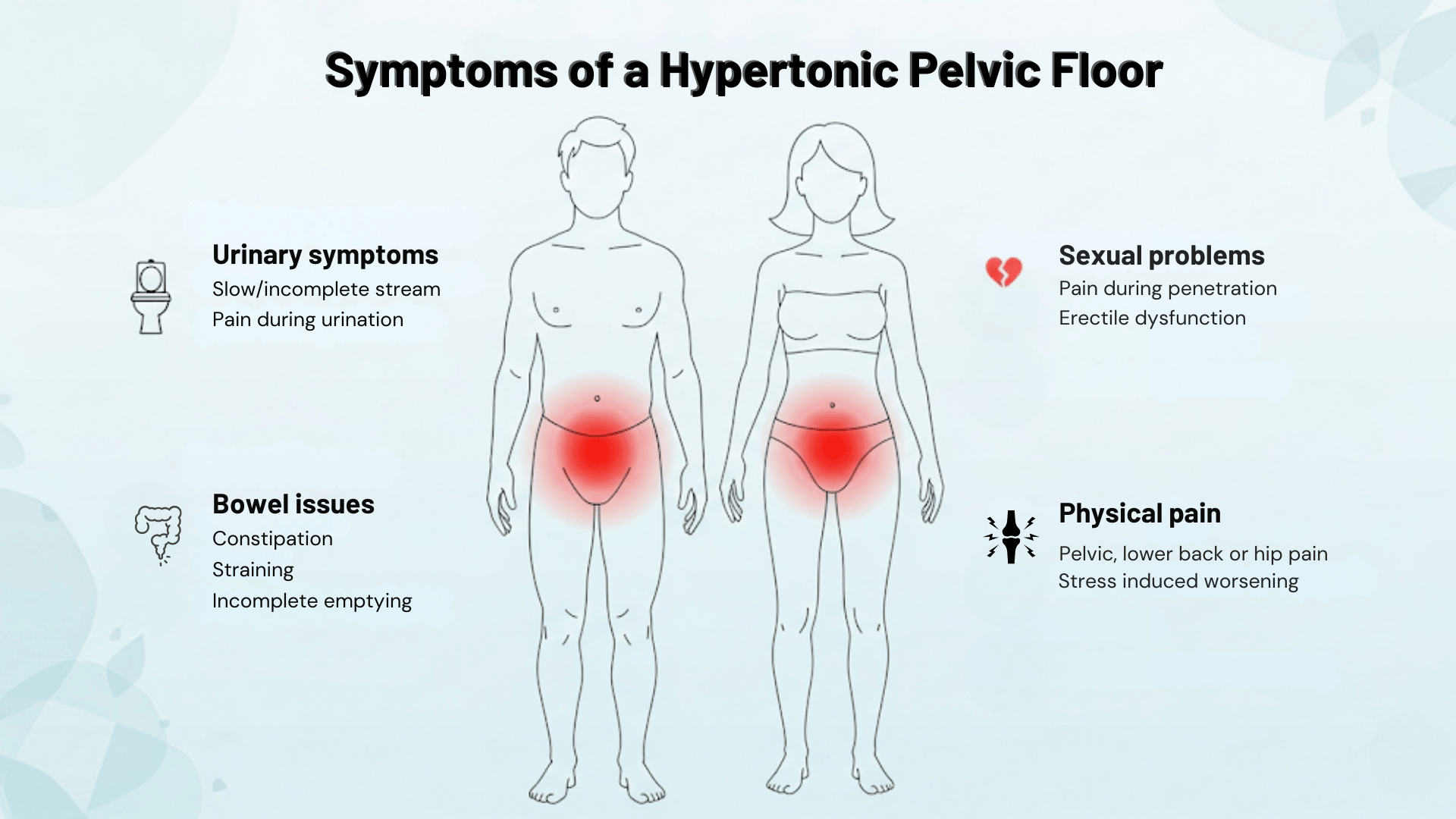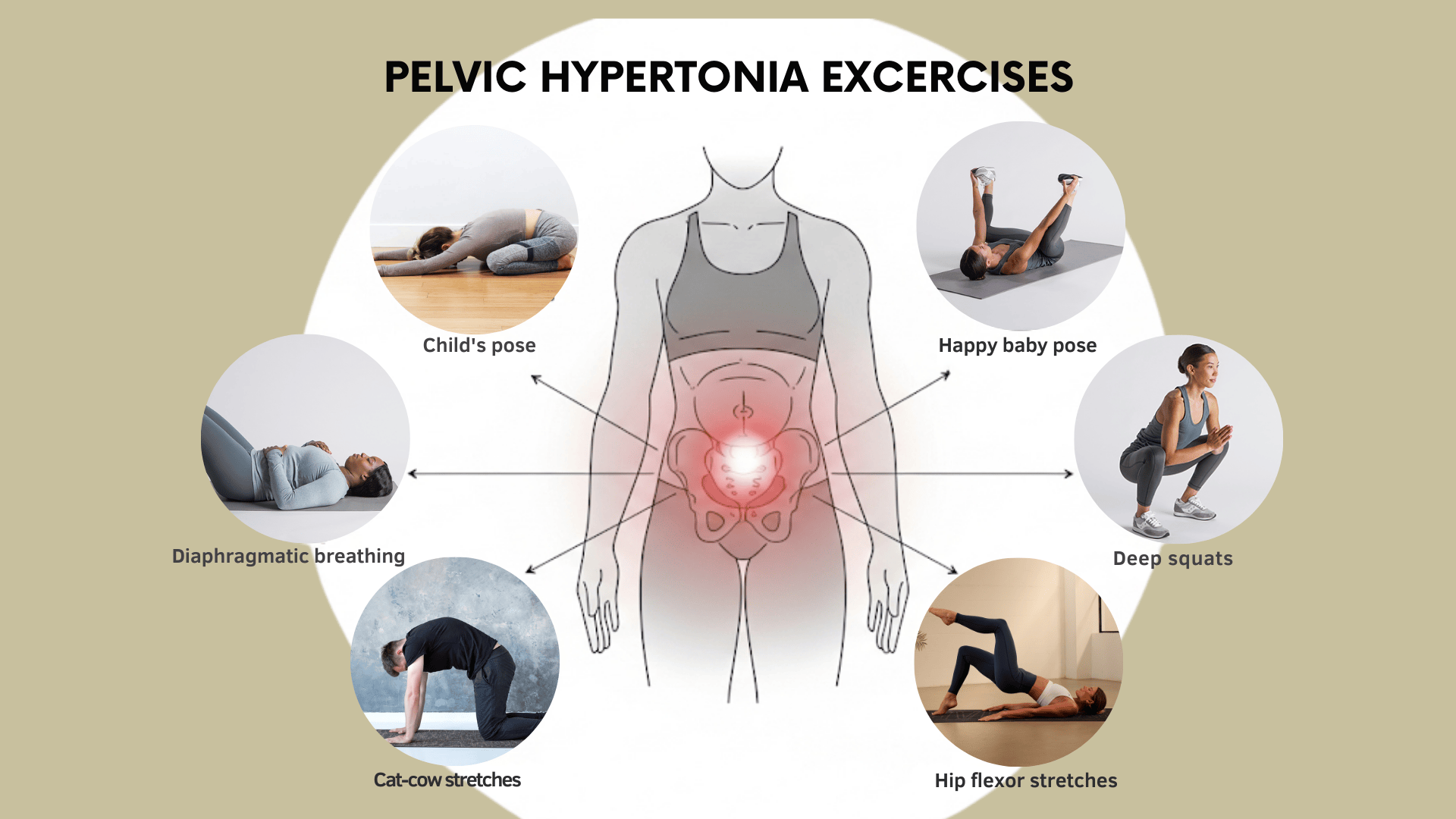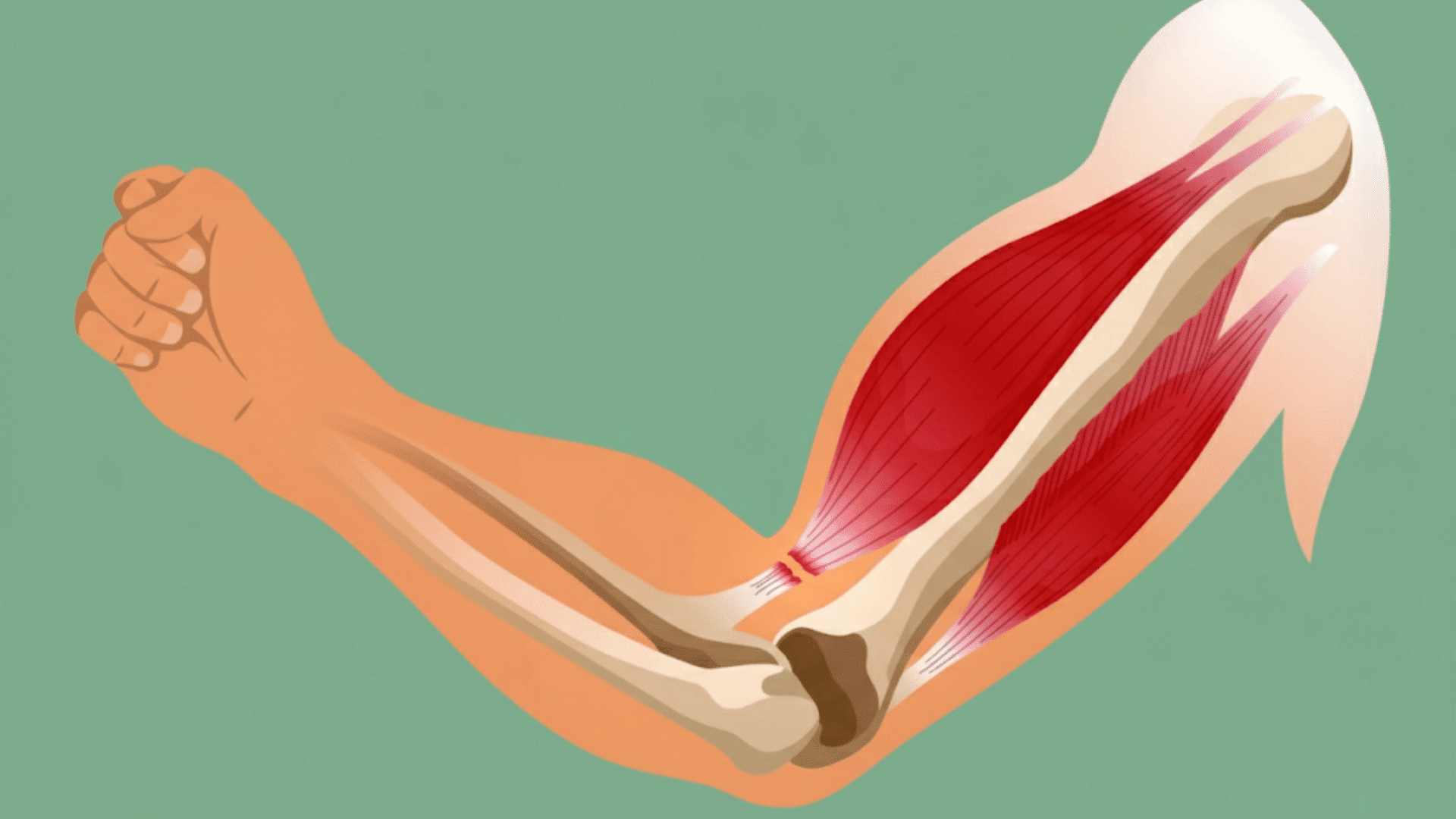Pelvic pain, frequent urination, and painful intercourse can turn daily life into a constant struggle.
Many people suffer silently, not knowing these symptoms often point to one condition called hypertonic pelvic floor dysfunction.
Your pelvic floor muscles may be working overtime, staying tight when they should relax. This creates a cascade of uncomfortable symptoms that affect your quality of life.
Understanding hypertonic pelvic floor symptoms and how to address them can bring the relief you’ve been seeking.
You’ll learn to recognize the signs, understand the causes, and find effective treatment options that work. Real solutions exist for this frustrating condition.
What Is a Hypertonic Pelvic Floor?
Your pelvic floor is a group of muscles that support your bladder, bowel, and reproductive organs. Think of it like a hammock stretched across the bottom of your pelvis.
When these muscles work properly, they contract and relax as needed. They tighten to prevent leaks and loosen to allow normal function.
A hypertonic pelvic floor means these muscles stay too tight, unable to relax. This constant tension creates problems. Your muscles can’t do their job when they’re always clenched.
Normal activities like urinating, having a bowel movement, or sexual activity become difficult or painful.
The condition affects both men and women. However, women experience it more often due to pregnancy, childbirth, and hormonal changes.
Hypertonic Pelvic Floor Symptoms
Hypertonic pelvic floor symptoms can manifest differently for each individual. Your body might send various signals that these muscles are too tight.
- Urinary symptoms are common. You might feel like you need to pee constantly. Sometimes the stream starts slowly or feels incomplete. Pain during urination can occur, too.
- Bowel issues also appear frequently. Constipation becomes a regular problem. You might strain more than usual. Some people feel like they can’t fully empty their bowels.
- Sexual problems affect many people with this condition. Penetration can hurt or feel impossible. Men might experience erectile dysfunction. Both partners may feel pain during intimacy.
- Physical pain manifests in various areas. Your pelvis, lower back, or hips might ache constantly. The pain can feel sharp, dull, or throbbing. Sitting for long periods exacerbates the issue.
- Other symptoms include muscle spasms in your pelvic area. Your legs might feel heavy or tired. Some people notice their symptoms Get Worse with Stress.
Hypertonia Pelvic Floor Causes and Risk Factors
Several factors can lead to hypertonic pelvic floor dysfunction. Understanding these causes helps you identify why your muscles stay tight.
- Physical trauma often triggers this condition. Childbirth can overstretch or damage pelvic muscles. Falls onto your tailbone create lasting tension. Surgery in the pelvic area sometimes leaves muscles guarded and tight.
- Chronic stress can trigger pelvic floor tension. Your body holds stress in different places. For some people, the pelvic floor becomes the storage spot.
- Poor posture affects your pelvic alignment. Sitting hunched over a computer all day can alter how your muscles function. Standing with your pelvis tilted forward creates an imbalance.
- Previous infections can leave lasting effects. Urinary tract infections or yeast infections make muscles contract defensively. Even after the infection clears, the muscles may remain tight out to habit.
- Emotional factors connect to physical tension. Past trauma, anxiety, or fear can manifest as muscle tightness. Your body remembers emotional stress and holds it physically.
Diagnosis for Hypertonia Pelvic Floor
Obtaining the correct diagnosis requires time and thorough evaluation. Your doctor will begin by reviewing your medical history and inquiring about your symptoms, their timing, and any triggers.
- Physical examination comes next. Your doctor will check your posture and walking pattern. They might press on different areas to find tender spots. An internal exam helps them feel muscle tension directly.
- Specialized testing might be needed. Some doctors use biofeedback to measure muscle activity. This shows whether your muscles contract and relax properly. Ultrasound can sometimes reveal muscle thickness or movement patterns.
Differentiation from Similar Conditions
Many conditions share symptoms with hypertonic pelvic floor dysfunction. Here’s how they differ:
| Condition | Key Symptoms | Main Difference |
|---|---|---|
| Hypertonic Pelvic Floor | Broad pelvic pain and urinary/bowel/sexual dysfunction are linked to constant muscle tension. | Constant muscle tension that improves with relaxation |
| Urinary Tract Infection | Burning urination, frequent urination, cloudy urine | Symptoms from infection, not muscle tension |
| Endometriosis | Severe period pain, pelvic pain, painful sex | Pain linked to the menstrual cycle and tissue growth |
| Irritable Bowel Syndrome | Stomach pain, bloating, diarrhea or constipation | Digestive focus, not muscle-based pain |
| Vulvodynia | Burning vulvar pain, painful touch | Surface pain only, no internal muscle tension |
| Interstitial Cystitis | Bladder pain, frequent urination, pressure | Bladder-focused symptoms, not muscle tightness |
The key difference is muscle tension. Hypertonic pelvic floor muscles show constant tightness and respond poorly to relaxation techniques. Other conditions don’t improve with muscle relaxation methods.
Treatment Options for Hypertonic Pelvic
Treating hypertonic pelvic floor requires a multi-step approach. Most people see improvement with the right combination of treatments.
1. Self-Care and Lifestyle Adjustments
Start with simple changes you can make at home. Simple breathing exercises help muscles unwind. Focus on letting your pelvic floor soften as you exhale.
Relaxation practices, such as meditation, help release this stress-related tightness. Heat therapy and warm baths provide immediate relief.
2. Pelvic Floor Physical Therapy
Specialized therapists offer targeted treatments you can’t do alone. Manual therapy includes trigger point release and internal massage to work out muscle knots.
Biofeedback uses sensors to indicate when muscles contract or relax, helping you learn to control them.
3. Medical Interventions
Sometimes you need medical help when other treatments aren’t enough. Medications like muscle relaxants and anti-inflammatory drugs reduce pain and tension.
Injections such as Botox can temporarily relax overactive muscles in severe cases. Surgery is rarely needed and only considered when all other treatments fail.
Exercises for Hypertonic Pelvic Floor
The right exercises can make a huge difference in your recovery. The following exercises are designed to help you focus on relaxation and stretching, rather than strengthening already tight muscles.
- Child’s pose gently stretches your pelvic floor. Get on your hands and knees, then sit back on your heels. Reach your arms forward and rest your forehead on the ground. Breathe deeply and feel your pelvic muscles soften.
- Happy baby pose releases tension in your hips and pelvic floor. Lie on your back and grab the outside edges of your feet. Gently pull your knees toward your armpits. Rock side to side if it feels good.
- Deep squats help your muscles learn to lengthen and stretch. Stand with feet wider than hip-width apart. Slowly lower into a deep squat, keeping your heels on the ground. Hold for 30 seconds while breathing normally.
- Diaphragmatic breathing is the most important exercise. Lie down with one hand on your chest, one on your belly. Breathe so that only the bottom hand moves. As you exhale, imagine your pelvic floor muscles gently relaxing and dropping down.
- Cat-cow stretches improve pelvic mobility. Start on hands and knees. Arch your back like a cow, then round it like an angry cat. Move slowly and focus on how your pelvis tilts.
- Hip flexor stretches reduce pulling on your pelvic floor. Step one foot forward into a lunge. Keep your back leg straight and push your hips forward. You’ll feel the stretch in the front of your back leg.
Start slowly with these exercises. Hold stretches for 30 seconds and repeat 2-3 times. Stop if anything hurts. Your muscles need time to learn how to relax again.
Conclusion
Living with tight pelvic muscles doesn’t have to be your new normal. With consistent practice and professional support, real relief is possible.
Recovery isn’t instant, but it’s possible. Combining breathing techniques, physical therapy, and lifestyle changes creates the foundation for long-term relief. Most people notice improvements within weeks of consistent practice.
Your symptoms are valid, and help is available. Start with simple breathing exercises today, then consider professional support if needed. Small daily actions lead to meaningful changes in how you feel.
Take the first step toward feeling better.














